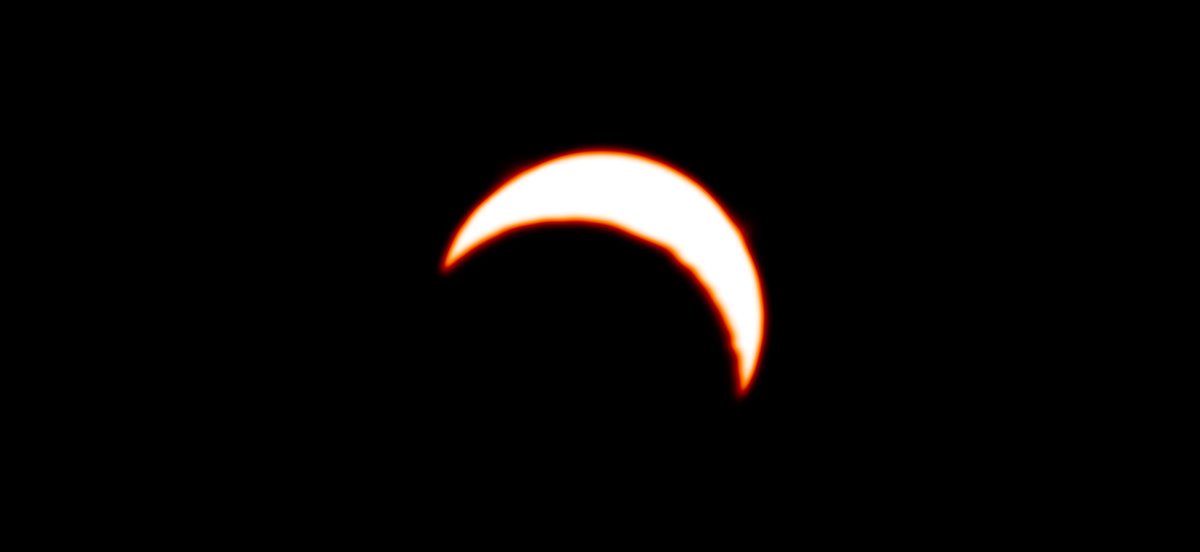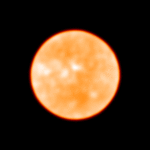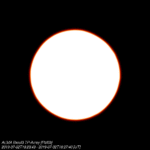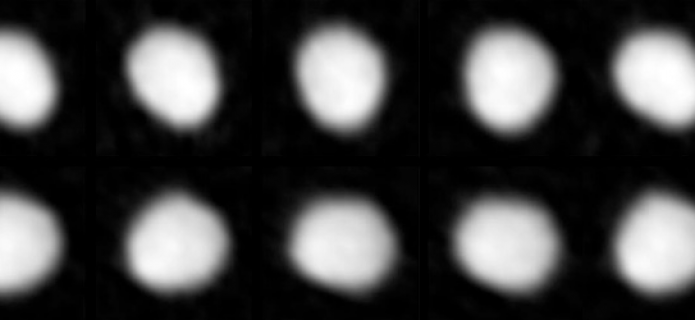2019 Solar Eclipse Image from ALMA
The Total Solar Eclipse of July 2, 2019, was partially visible from the ALMA observatory with 76% of the Sun covered by the Moon. Against all the odds, despite the cloudy skies, some snowfall, and high winds, one of the antennas observed the Sun in great detail during the eclipse. 27 images of the eclipse were taken to create a short video (GIF image below).
“We had to undertake an observatory-wide effort to observe the eclipse with an antenna,” explains Antonio Hales, ALMA astronomer in charge of observations. “Snow, high winds, and cloudy skies were some of the challenges faced by the ALMA team when taking this unique picture of the Moon as it partially hid the Sun, but in the end, we are glad that we succeeded.”
The Moon covered 76% of the Sun during the 2019 Solar Eclipse at ALMA. There were thick clouds in the sky and winds up to more than 10 meters per second in the Array Operation Site (AOS). The ALMA Department of Engineering managed to recover the antenna after snowfall just in time to observe, however, increased winds more than 15 meters per second forced observations to stop before the end of the eclipse.
These observations were made with antenna PM03 in Band 3 (100 GHz). Masumi Shimojo, Solar Astronomer, performed the calibrations. Specials thanks to the IMG and AMG team who recovered the antenna just in time after a snowstorm hit the Chajnantor Plateau before the eclipse began.
Additional Information
The Atacama Large Millimeter/submillimeter Array (ALMA), an international astronomy facility, is a partnership of the European Organisation for Astronomical Research in the Southern Hemisphere (ESO), the U.S. National Science Foundation (NSF) and the National Institutes of Natural Sciences (NINS) of Japan in cooperation with the Republic of Chile. ALMA is funded by ESO on behalf of its Member States, by NSF in cooperation with the National Research Council of Canada (NRC) and the Ministry of Science and Technology (MOST) and by NINS in cooperation with the Academia Sinica (AS) in Taiwan and the Korea Astronomy and Space Science Institute (KASI).
ALMA construction and operations are led by ESO on behalf of its Member States; by the National Radio Astronomy Observatory (NRAO), managed by Associated Universities, Inc. (AUI), on behalf of North America; and by the National Astronomical Observatory of Japan (NAOJ) on behalf of East Asia. The Joint ALMA Observatory (JAO) provides the unified leadership and management of the construction, commissioning, and operation of ALMA.




